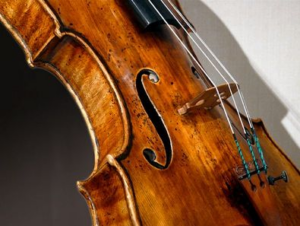 Violin Price – Is More Expensive Always Better?
Violin Price – Is More Expensive Always Better?
Choosing the right violin is a significant decision, especially for aspiring musicians and parents of young students. One common misconception is that a higher violin price always guarantees better quality. In this blog, we’ll explore the factors to consider when purchasing a violin and whether a more expensive violin is necessarily the best choice.
Understanding the Relationship Between Price and Quality
The price of a violin can vary significantly, from affordable student models to exquisite professional instruments. While there is a correlation between price and quality to some extent, it’s essential to understand that a higher price doesn’t automatically translate to a better instrument. Here are some key factors to consider:
1. Craftsmanship: The quality of craftsmanship is a crucial determinant of a violin’s value. Highly skilled luthiers can create exceptional violins at various price points. An experienced luthier can make an affordable violin sound remarkably good.
2. Materials: The type of wood used in the violin’s construction can affect its price. High-quality tonewoods, such as spruce and maple, are often used in better violins. However, less expensive woods can still yield excellent results in the hands of a skilled maker.
3. Age and Origin: Vintage violins, particularly those made by renowned luthiers, can command a high price due to their historical significance and exceptional craftsmanship. However, not all vintage violins are necessarily superior to modern instruments.
4. Sound and Playability: Ultimately, the sound and playability of a violin are subjective. What sounds and feels right to one musician may not be the same for another. A more expensive violin may not necessarily match your personal preferences and playing style.
Consider Your Goals and Budget
When purchasing a violin, it’s essential to consider your goals and budget:
1. Student Violins: For beginners, it’s advisable to start with a reasonably priced student violin. These instruments are built to be durable and reliable, suitable for learning the basics. As a student progresses, they can upgrade to a higher-quality violin.
2. Intermediate and Advanced Players: Intermediate and advanced players may benefit from investing in a better quality violin as their skills develop. However, it’s crucial to try out multiple instruments to find one that matches their playing style and musical goals.
3. Professional Musicians: Professional musicians often require the highest quality violins to meet the demands of their performances. They may opt for vintage or contemporary instruments, but their choice is influenced by their unique preferences and needs.
Value Beyond Price
In the world of violins, the relationship between price and quality is not linear. A more expensive violin does not always equate to a better instrument. The best violin for you is one that matches your playing style, preferences, and budget. Consider consulting with a knowledgeable luthier or teacher when making your decision, and prioritize sound, playability, and craftsmanship over price alone. Ultimately, the true value of a violin goes beyond its cost, residing in the music it helps create and the joy it brings to the musician.
Here is an interesting blind test comparison done by TwoSet Violin featured on The Strad Magazine.
